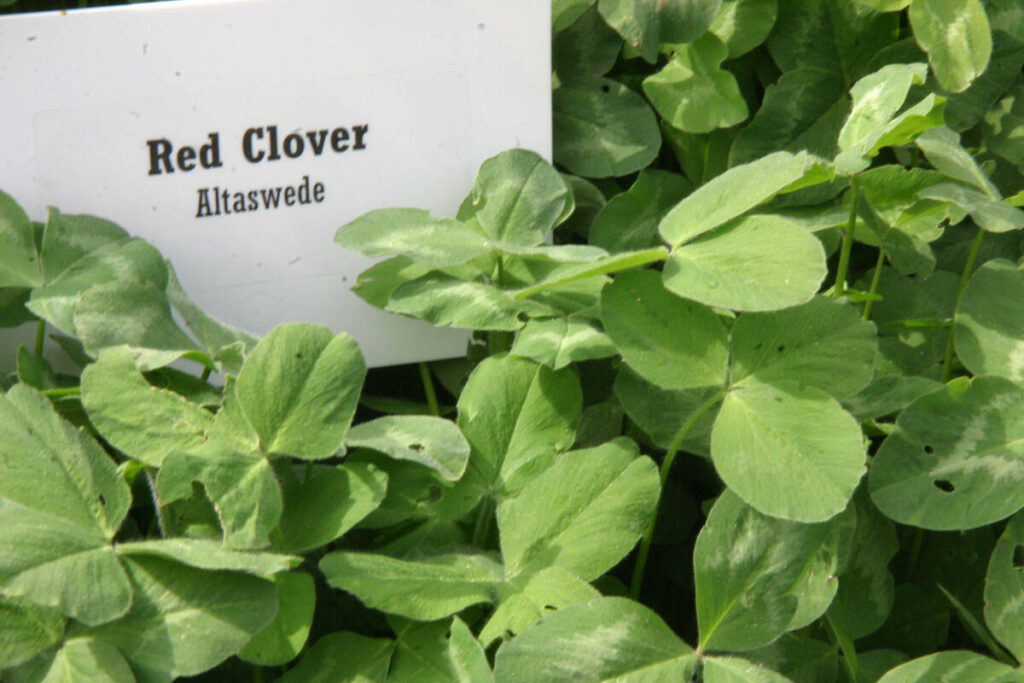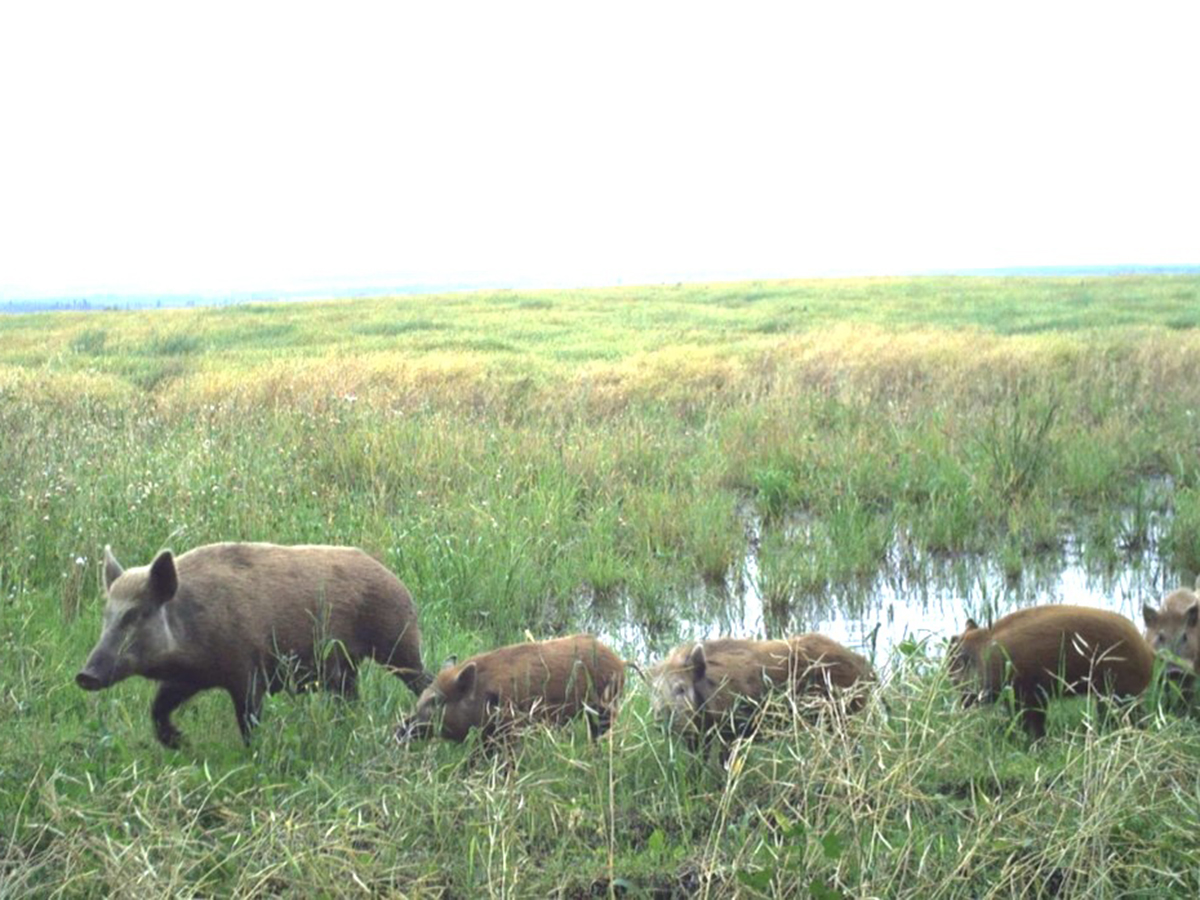Red clover: A forage crop worth a second look

Glacier FarmMedia – Producers looking for a high-yielding, nitrogen-fixing forage crop should take a second look at red clover.
According to forage expert Dan Undersander, too many producers overlook this versatile legume in favour of alfalfa, despite its many advantages.
“Red clover is something I think we don’t use enough of,” Undersander, a retired professor from the University of Wisconsin-Madison, told a three-day forage workshop hosted by the Canadian Forage and Grassland Association at the University of Manitoba earlier this year.
Read Also


Wild pig control goes high-tech
Digital tools and new technology is transforming how Canada finds, traps and eradicates invasive wild pigs
Red clover is a cool-weather crop. While alfalfa tends to yield better in southern regions, the trend shifts as you move north. Undersander says this shift is noticeable even within his own state.
“It’s a temperature thing,” he says.
In trials in southern Wisconsin, at Madison, alfalfa consistently outyielded red clover on average. However, in trials further north at Marshfield, just east of Minneapolis, the two crops yielded similarly. In the northernmost reaches of the state, at Ashland near Lake Superior, red clover consistently outyielded alfalfa.
“The further north we went, the cooler it was, and that cooler temperature favoured the red clover,” he says.
While it doesn’t make an effective hay crop because of slow drying rates, Undersander points out that red clover is well-suited for baleage or silage production.
It establishes easily and provides good yields. It thrives best in fine-textured soils with high moisture-holding capacity, and, as such, is only moderately drought-tolerant.
“The other nice thing about red clover is you don’t have any of the autotoxicity problems that you get with alfalfa,” says Undersander, referring to alfalfa’s tendency to release compounds into the soil that can hinder the growth of new plants, making reseeding more difficult.
Red clover requires a soil pH level of around six — slightly higher than some other clovers but well shy of the requirements for alfalfa, which likes a soil pH level of 6.5 to 7.5. This can benefit farmers in areas with more acidic soils, especially in areas where distance from lime sources makes hauling lime prohibitively expensive.
“They can get by with less lime and still have a good forage crop,” Undersander says of the producers who face that predicament in northern Wisconsin.
In terms of nutrition, red clover holds its own against alfalfa.
“Red clover has equal fibre, slightly less crude protein, but equal milk yields in trials we’ve done,” Undersander says.
It also boasts greater neutral detergent fibre (NDF) digestibility and dry matter digestibility.
One difference farmers should be aware of is that red clover turns black when harvested, unlike alfalfa, which turns brown.
“I’ve seen farmers think it’s spoiled because of the colour change,” Undersander says.
“It’s not. You just have to get used to it.”
Like any crop, red clover has its drawbacks. It’s only moderately drought-tolerant, which can limit its performance during dry spells. Red clover can also cause bloating in livestock if consumed in large quantities, so careful management is necessary.
It also tends to be less persistent than other forages, meaning farmers may need to reseed more frequently compared to crops such as alfalfa — although Undersander says that with premium varieties, stands can be good for up to four years.
In addition to these challenges, red clover is also susceptible to certain diseases, including northern anthracnose, fusarium root rot and sclerotinia crown rot. While plant breeding has improved disease resistance, Undersander advises against maintaining continuous clover stands.
“I would suggest that we think about not trying to have a continuous clover because that’s where the disease loads build up,” he says.
“Plus, if we rotate out, we get the nitrogen benefit for the next crop.”
For disease management, Undersander recommends rotating red clover for two or three years, then taking one or two years out, before replanting.
“That’s a wise way to work with it,” he says.
In terms of the forage mix, for optimal results, Undersander recommends planting red clover with both a grass and a cereal grain.
“I’d generally plant red clover with a grass and a cover crop — three things,” he says.
“We would go with red clover at six to eight pounds per acre, then a grass like fescue or orchardgrass at about eight lb. And if you want to add barley, I’d plant it at about 45 lb. per acre.”
When harvesting, he suggested cutting late in the summer to encourage rosette formation, followed by a second harvest at 20 per cent bloom in the second year.
“You don’t need to cut it as immature as alfalfa to get the same animal performance,” he says.
Undersander emphasizes that legumes such as red clover are not just forage crops but also valuable nitrogen sources. Properly inoculated, red clover fixes its own nitrogen, reducing the need for synthetic fertilizers.
“It provides a high-quality forage, nitrogen for the following crop, and a yield increase,” he says.
Studies have shown incorporating legumes into rotations can boost yields in subsequent crops such as corn, wheat and sorghum.
“If you’re talking about a 20 per cent yield increase on corn, that’s a big deal,” he says.
“And that’s for either silage or grain.”
Beyond yield benefits, red clover can help reduce greenhouse gas emissions.
“It takes about 53 gallons of diesel to produce a crop of corn silage,” Undersander says.
“Half of that comes from manufacturing nitrogen fertilizer. Take that away, and the total drops to 24 gallons. That’s a huge reduction.”
With fertilizer costs rising and environmental concerns growing, the crop’s ability to cut greenhouse gas emissions and reduce fertilizer use gives farmers one more reason to consider red clover, Undersander says.
“I think we’re missing the boat by not using it for baleage or silage.”
Source: producer.com


